 Today, we’d like to show you an interesting and diverse collection of headpieces made by a young seamstress. Her name is Angela Clayton. And she makes clothes of various styles, designs, historical periods, and materials. The matching accessories used with these costumes include headdresses. In her collection, she’s got dozens of hats and headpieces inspired by the fashion of the 1400s, 1500s, 1700s, 1800s, and 1900s.
Today, we’d like to show you an interesting and diverse collection of headpieces made by a young seamstress. Her name is Angela Clayton. And she makes clothes of various styles, designs, historical periods, and materials. The matching accessories used with these costumes include headdresses. In her collection, she’s got dozens of hats and headpieces inspired by the fashion of the 1400s, 1500s, 1700s, 1800s, and 1900s.
Hennin, circa 1480
Hennins were the most popular headpieces throughout the 1400s and came in a variety of styles. This one is really simple and sits an inch away from the beginning of the hairline. It has a base of interfacing with wire sewn into the edges to stiffen it. It's covered with a home decor fabric and has a long veil made from matching silk chiffon that was hemmed by hand. The bottom edge of the hennin is trimmed with silver lace, then, over top of that, there's a gold beaded lace which has been further embellished with gold beads and silver sequins. It's fully lined with cotton, with gold braids sewn into the interior.

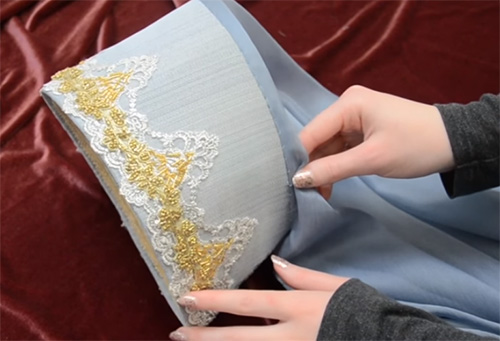
French hood, circa 1540
This is another very traditional headpiece. It's a French hood based on one from the mid-1500s and it was worn as part of a tutor ensemble. It sits relatively far back on the head and is held in place by sculpting the wire in the hood to fit the head. It's made from interfacing and buckram that has wires sewn into the edges and is covered with a mixture of brown velvet and silk dupioni. There is a velvet veil that falls down the back and ruffled lace trimming across the edges. The headdress is also decorated with glass pearls and Montee beads.
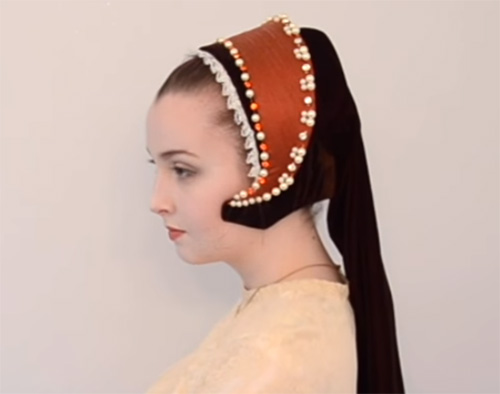

Escoffin (heart-shaped headpiece), circa 1440
This is a heart-shaped headpiece which is also called an “escoffin”. This was a complicated thing to make. It has an interfacing base but was heavily padded to form the needed shape. The side panels are covered with jacquard with a gold mesh overlay, and they are outlined with brocade piping. The top portion is stretch velvet with a small chiffon ruffle across the bottom edge. It's heavily embellished with glass seed beads, a ton of pearls, and a framed gold Montee that sits at the center front.
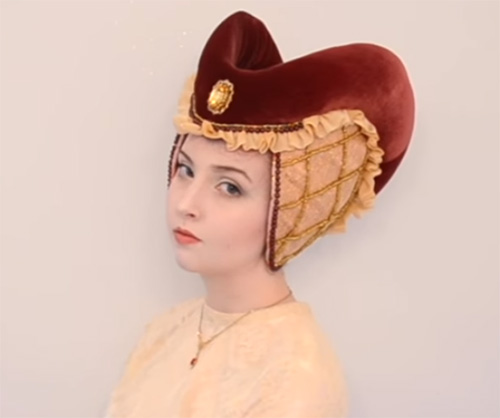
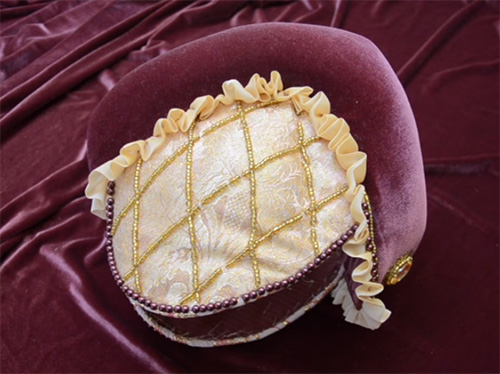
Horned headdress, circa 1440
This headpiece is quite similar to the last one. It's in the same heart-shaped headgear category but this one has horns. It's made from interfacing and a ton of wire to keep it in shape. Eight different materials were used to achieve the needed texture, including glittery mesh, brocade, iridescent chiffon, and many others. This piece is quite heavily beaded as well, with a variety of fake pearls and seed beads. At the front, there's a framed imitation opal. A veil extends out from that stone and drapes over the top of the horns and down the back.
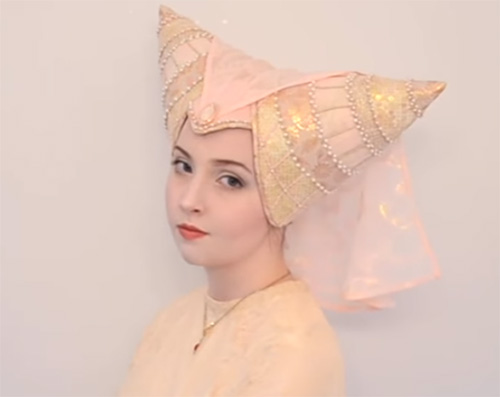
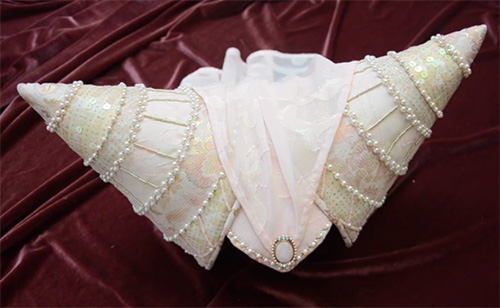
Poke bonnet, circa 1810
This piece is a shallow brimmed bonnet. It's made from heavyweight interfacing with wired edges. It's covered with red cotton sateen with matching ties and banding details across the back. This bonnet sits a bit too far back but that was very common in the early 1800s. The banded portion of the bonnet is meant to cover the neck, with the cotton ruffle covering any escaped hair. The bonnet ties securely around the chin, keeping it in place. The interior is lined with cotton and gathered silk organza. The cap of the bonnet is a gathered piece of cotton eyelet fabric. And the brim of the bonnet is bound with a matching material. It's decorated with hand-dyed fake roses and sprays of small white flowers.
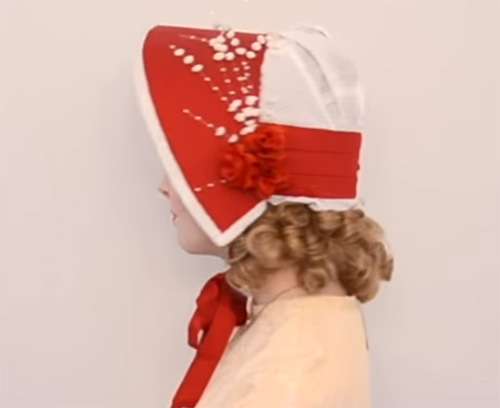
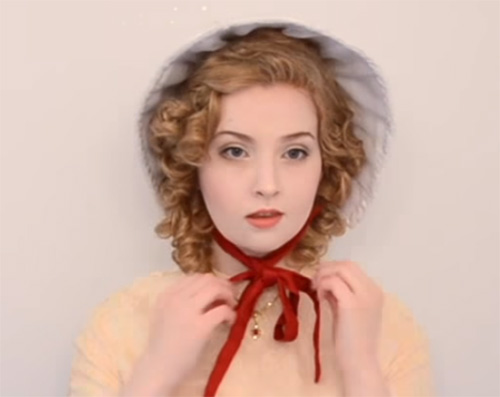
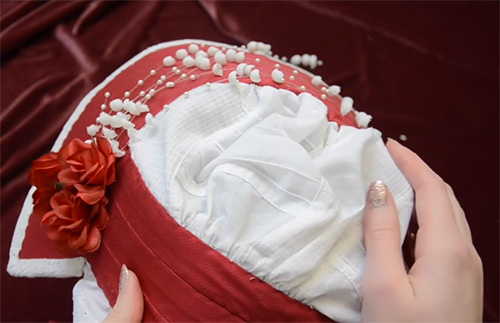
Wide-brimmed Poke bonnet, circa 1835
This next piece is also a bonnet but it sits much higher on the head and has a much broader brim. The silhouettes of bonnets became quite extreme in the 1830s – almost silly, much like the dresses from that time. Here, you can really see the crazy shape of this bonnet: the back portion sits higher than the brim which isn't something you'll see in any other era. This bonnet is made from wired interfacing. The pieces were covered with dark pink velvet before being sewn together. It's completely hard-shelled, aside from the cute ruffle across the back. The interior is a bit rough but the brim is fully lined with orange silk taffeta and the cap is lined with striped taffeta. As far as details go, there are two bands of orange taffeta across the back of the bonnet: one band meets in a boat back and the other continues down to create ties.
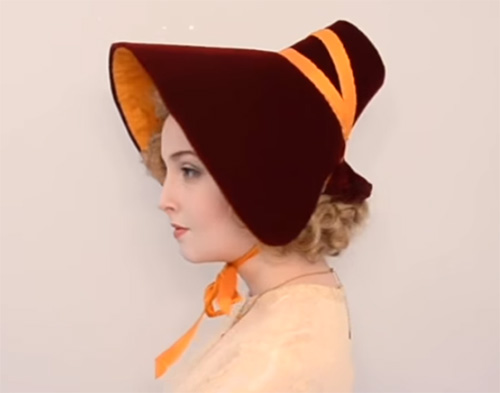
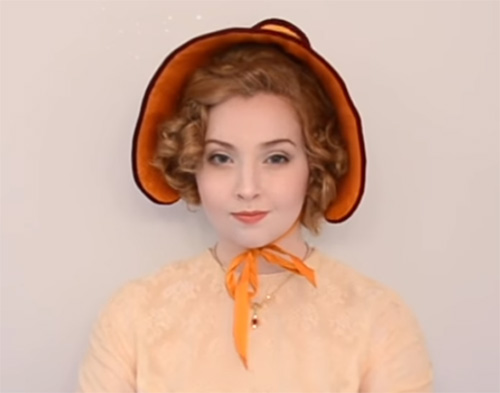
Tricorne, circa 1745
Believe it or not, this is a sporting hat. Well, sort of. Tricornes were every lady's choice in the 18th century when it came to riding ensembles. But this is a more decorative one. It's made to be quite small and sit on top of the hairstyle rather than securely on the head. This has a base of interfacing and a cap made from buckram. It's covered with thick red wool, and the edges are bound with gold brocade. Constructing such a hat was time-consuming. There are sequins outlining the gold binding, along with the beaded applique and tassel, all of which was hand-sewn. The top of the hat is decorated with feathers and handmade flowers. The hat is unlined and has a comb sewn to the back to keep it in place.
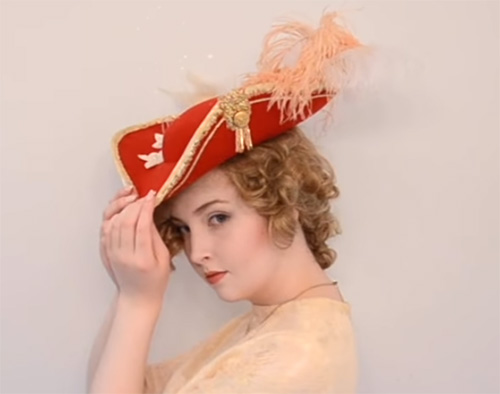
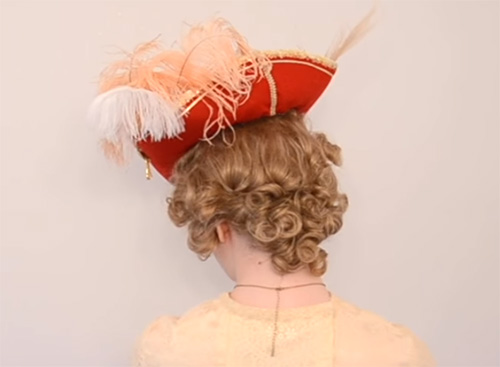
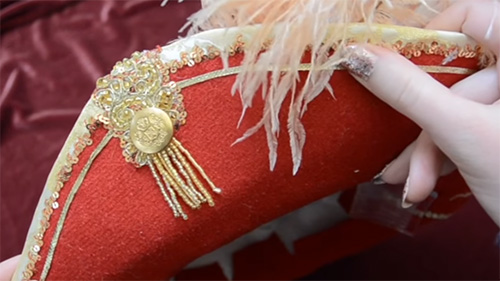
Country straw hat, circa 1785
From a slightly later period, here is a simple straw hat. The crown of this hat was reshaped but the base was store-bought. It's trimmed with a strip of yellow cotton, with a large matching bow at the back. It also had several fake flowers on it, along with an ostrich feather.
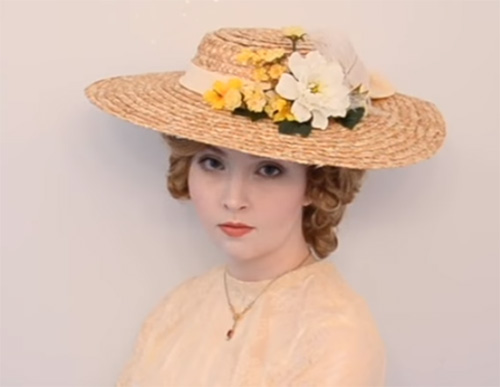
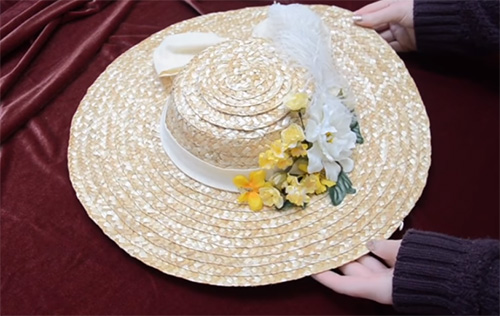
Wide brim hat, circa 1908
This hat is of similar style but from a much later period. This was made to go with a 1890s dress but is based on styles from the early 1900's. This was made from buckram with several bands of wire sewn into the brim to support it. It's covered with dark purple taffeta and lined with cotton, tulle, and satin ribbon. Also, there are huge decorations including a mass of ostrich feather, some fake flowers, and some purple goose feathers within the flora to tie it all together.
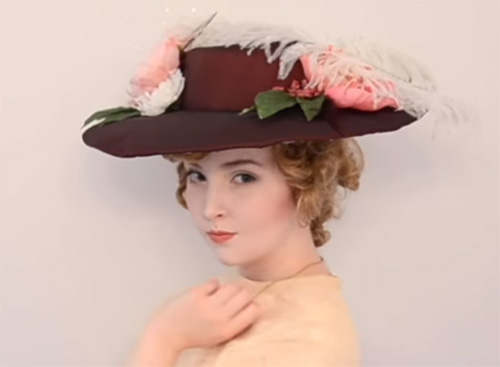
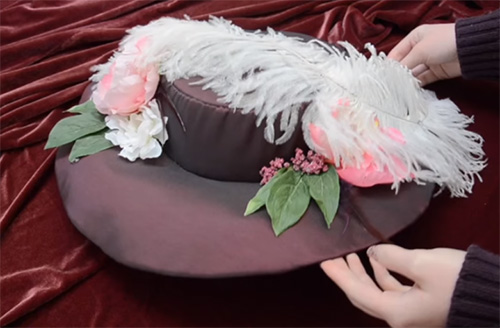
Bicorne, circa 1890
This hat is a bicorne. It's based on a fashion plate from the 1890s. Brown silk is used for the exterior and the cap. It’s stretched over interfacing and stiffened with wire. The cap is lined with cotton but the brim is lined with ruched silk taffeta. The headdress is decorated with orange roses, leaves, and a peachy colored feather that is draped across the top. It has a comb pinned into it to keep it securely in place when worn.
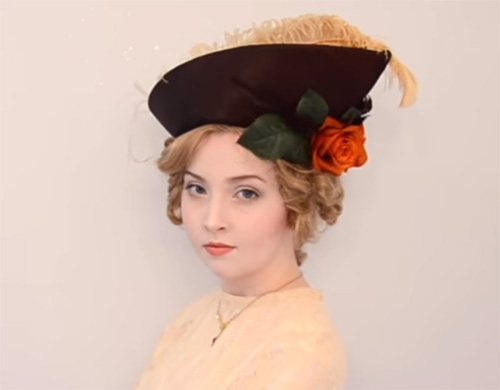
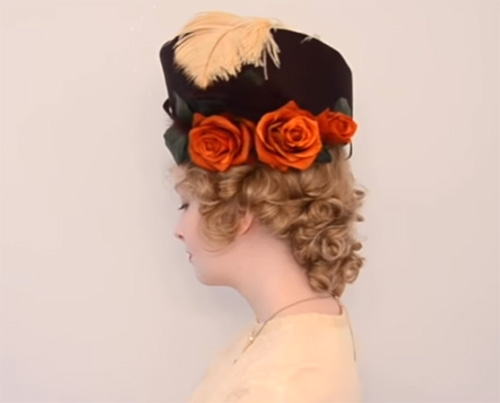
Flower Pot hat, circa 1885
This hat is called a “flower pot hat” since crowns often looked like overturned pots. It is made from wired interfacing. The brim is larger in the front and curves up into two points at the back. It's covered in brown silk and bound with matching bias binding. The interior is red velvet and it has a matching sash around the crown. But the star of this hat is the bird. Hats decorated with birds were very common during the turn of the century, so common in fact that feather laws were put into place to save species from extinction. On the other side of the hat, there's a bow and a few goose feathers.
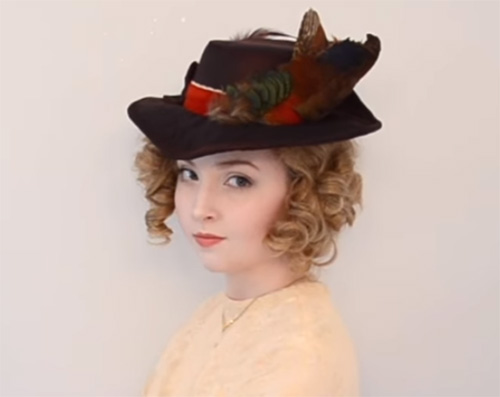
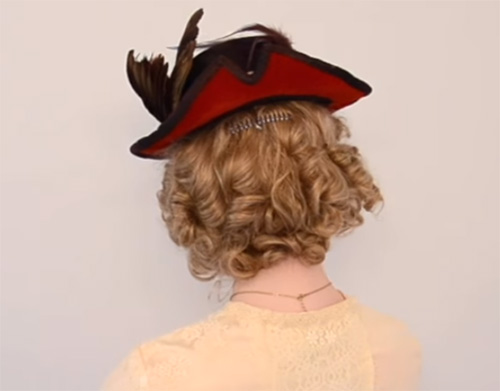
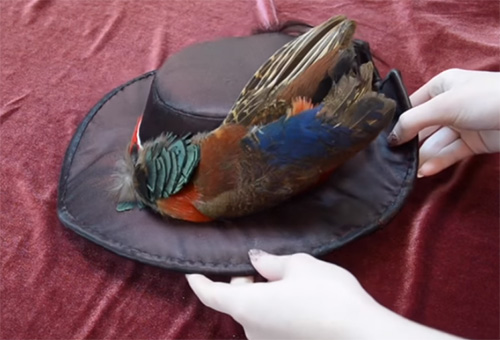
Morning cap, circa 1855
Jumping back in time, here is a cap based on ones from the 1850s and 60s. This cap has two bands lined with wire that can be formed to fit the head. The bands are covered with strips of wool flannel that extend past where the band ends and turned into ties that secure the cap in place. In between the bands, there is a cap portion which is made from lace. A small piece of vintage lace is used for the base and a vintage napkin to form the ruffle that sits over the top.
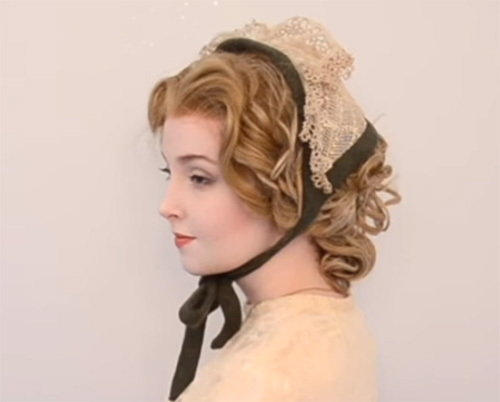
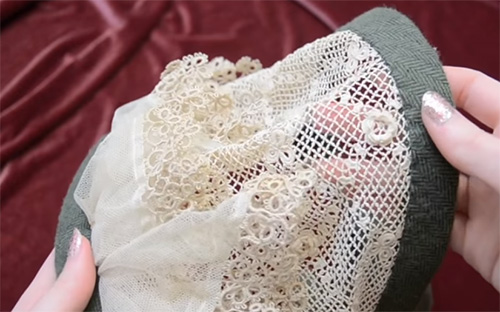
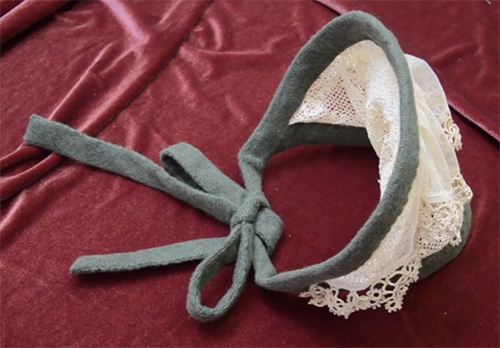
Evening cap, circa 1860
This is a similar but more elaborate piece that is intended to be paired with ball gowns. It also has two bands but the space between them is left open to reveal the hairstyle. One band goes across the top of the head and the other hugs the hair just above the neck. The bands meet around the ears and, usually, this portion is decorated with lace or flowers. Like really fancy impractical ear muffs. At the back, there is a large lace ruffle that serves as a veil. The bands are covered with cotton sateen, then decorated with sequins. The sides are covered with flowers and large beads, with a ruffle of Chantilly lace across the back.
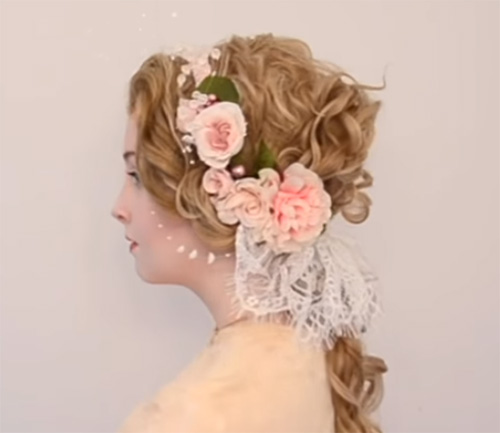
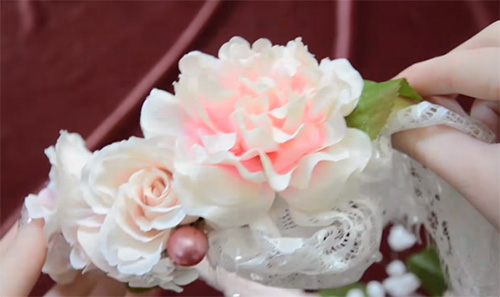
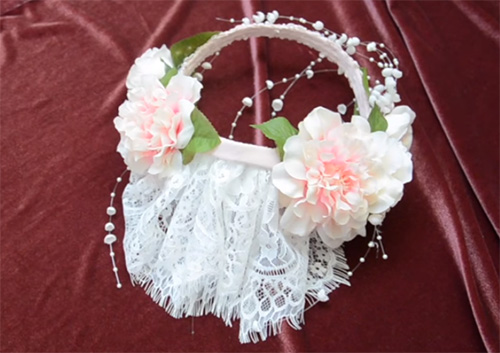
Shingle band, circa 1925
The simplest headpiece in the collection may also be the most iconic. It was made famous in the 1920s and is known as the “shingle band”. It sits straight across the forehead and is pinned in the back. This one is made from embellished scraps of gold lace with large crystals glued on for sparkle. Small ostrich feathers are attached to it as well to add a bit of movement.
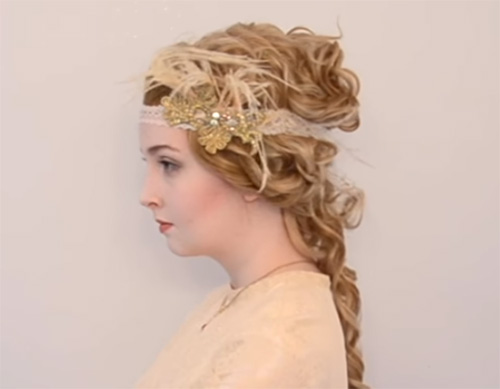
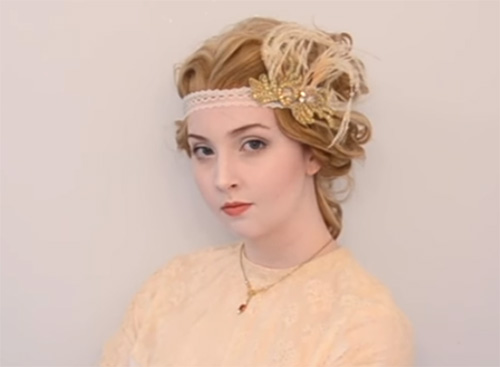
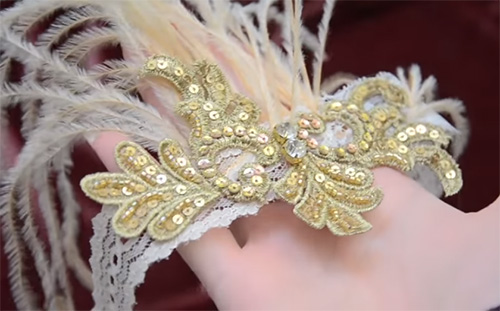
Grecian headpiece
This is a Grecian inspired crown based on sculptures from the Metropolitan Museum of Art. It is made from interfacing which was covered with satin face chiffon. The chiffon was embroidered, then covered with sequins.
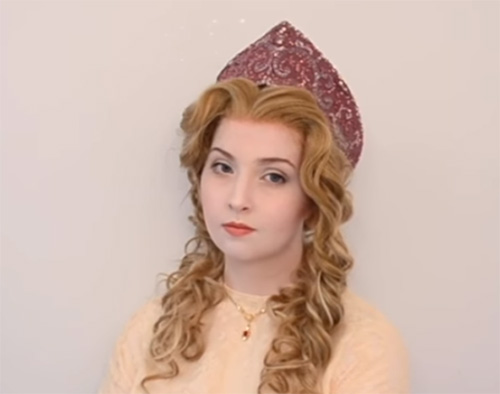

Velvet cap, circa 1540
This hat was inspired by a painting of Isabel de Requesens. The hat is a simple beret-style made from two circles one of which has another circle cut out of it to create the head opening. It's made from red velvet and lined with quilt batting to puff out the shape. The front has some random beadwork on it. This hat sits far back on the head and forms almost a halo behind the hair when it straightened out properly.


Sailor hat, circa 1890
This is a sailor-style hat which has a flat brim and straight cap. These were very popular in the late 1800s and often paired with sporting or boating ensembles. They were usually made from straw but this one is made from a heavier material. This is, probably, the easiest type of hat to make since the pattern is just two ovals and a rectangle. Wired buckram was used for the brim and interfacing – for the rest of it. It's covered with black wool felt and trimmed with a vintage gray ribbon and a few paper flowers. The brim is lined with a damask print denim and the cap – with a fun polka dot fabric. There are three rows of hand stitching around the brim to secure the lining and wool together. This helps keep everything smooth which is important when the brim is so thin and so straight.
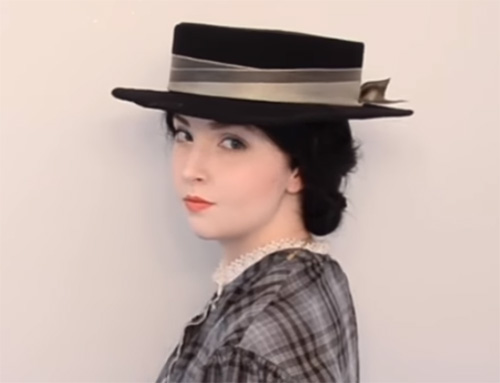
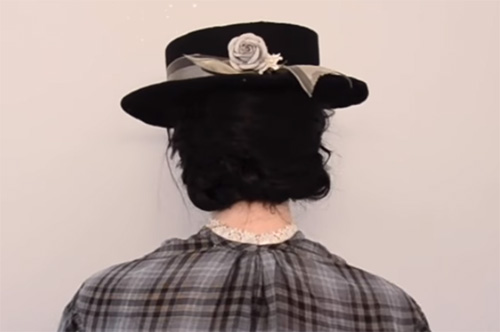
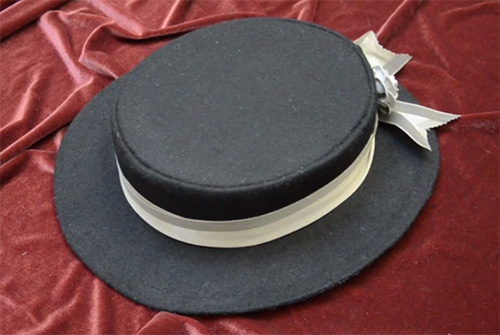
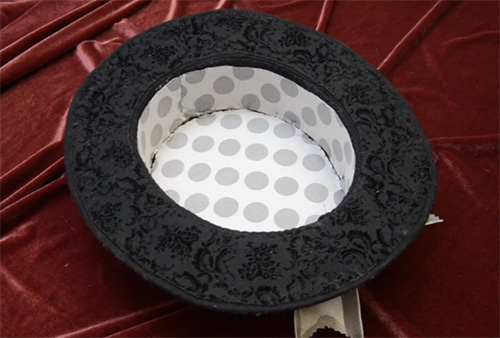
Wide brim hat, circa 1565
This headdress was created as part of an Ana de Mendoza inspired ensemble, based on a portrait from the mid-1500s. It's made from taffeta with denim lining. For decoration, it has a sash of silk chiffon tied into a bow, along with several ostrich feathers and a few curled rooster feathers. The interfacing is covered with flannel before attaching the top layer fabric and lining, which makes the edges really thick and the hat very heavy. The edges are also bound with thick wool which isn't the most attractive finish. And a hat of this size really needs a few bands of wire in the brim.
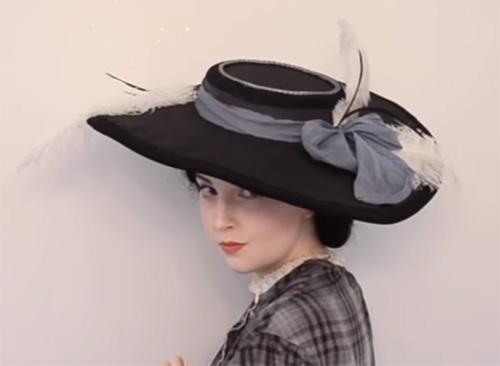
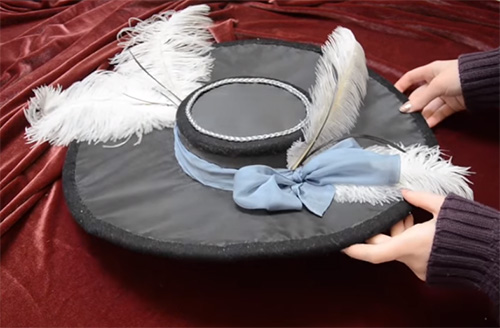
Pork pie hat, circa 1860
A recent addition to the collection is a hat that was very trendy in the 1860s. It's called a “pork pie hat”, named for the fact that it has the shape of the meat pie. The sides are completely straight with an upright brim and domed top. The hat is slightly wider towards the front, with the top edge sloping into a gentle point at the center of the forehead. The brim is trimmed with plaid piping and has several feathers slipped into it, along with a brooch decorating it. The brim of the hat is buckram but the structure is made from wired interfacing and the top is padded slightly to get the dome to fact. All the pieces are covered with black velvet and lined with polka dot cloth.

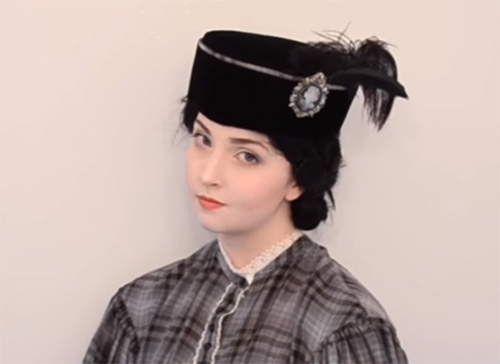

(c)


